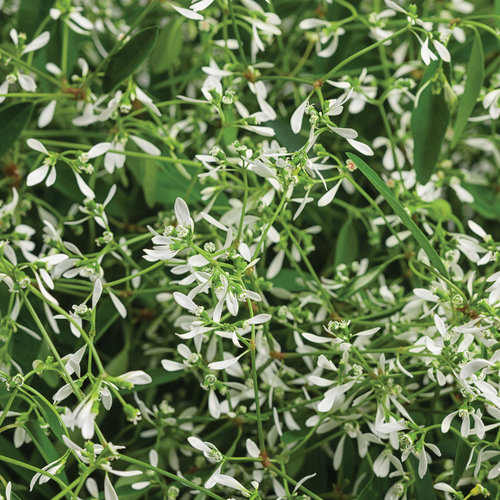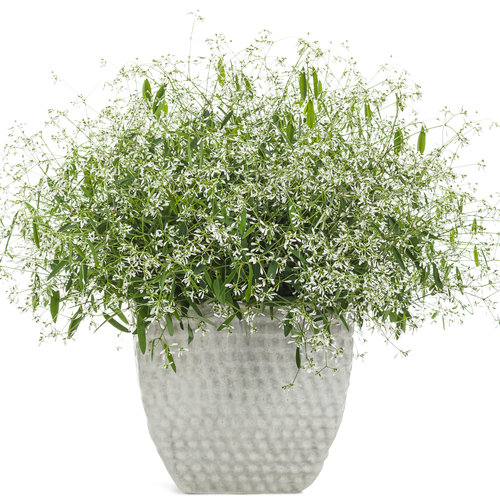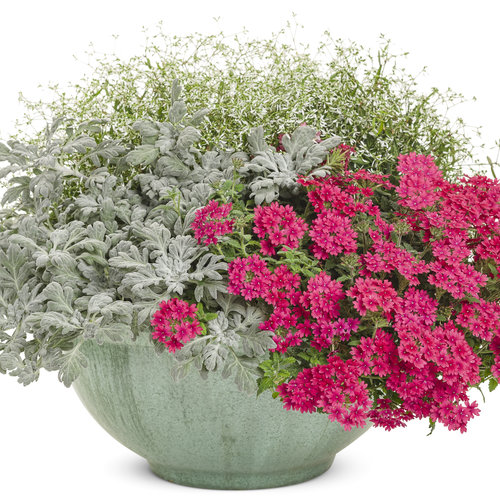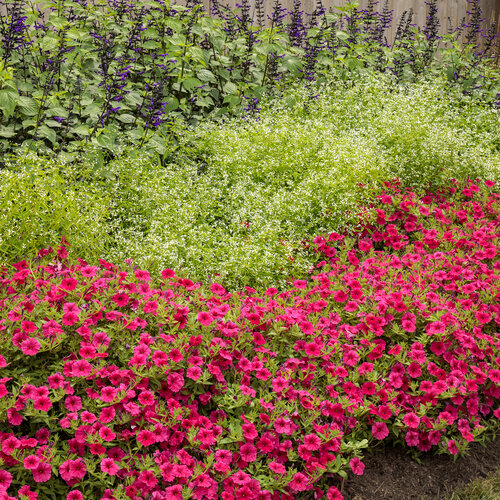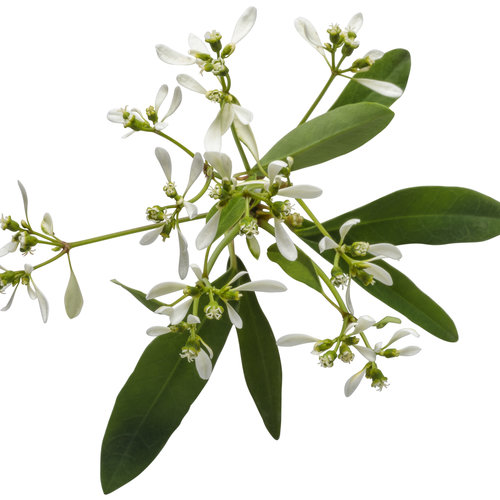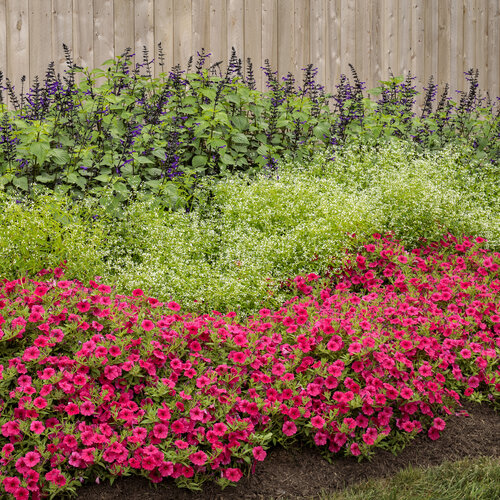Diamond Mountain® Euphorbia hybrid
4.25” POT
-
DETAILS
FEATURES
Heat- and drought-tolerant plants; clouds of airy white flowers all season; low maintenance. Much larger plants than Diamond Frost® with a great landscape presence and perfect for mixing with other vigorous plants.
Award WinnerContinuous Bloom or RebloomerLong BloomingHeat TolerantDeadheading Not NecessaryDrought TolerantResists:DeerCHARACTERISTICS
Plant Type:AnnualHeight Category:MediumGarden Height:24 - 36 Inches61cm - 91cmSpacing:12 - 18 Inches 30cm - 46cmSpread:24 - 36 Inches 61cm - 91cmFlower Colors:WhiteFlower Shade:WhiteFoliage Colors:GreenFoliage Shade:GreenHabit:MoundedContainer Role:FillerPLANT NEEDS
Light Requirement:Part Sun to SunThe optimum amount of sun or shade each plant needs to thrive: Full Sun (6+ hours), Part Sun (4-6 hours), Full Shade (up to 4 hours).
Maintenance Category:EasyBloom Time:Planting To FrostHardiness Zones:10a, 10b, 11a, 11bWater Category:AverageUses:Border PlantContainerLandscapeMass PlantingUses Notes:Plant in landscapes, containers or large combinations that include other very vigorous plants.
Maintenance Notes:Diamond Mountain might look delicate and frilly, but nothing could be further from the truth. Diamond Mountain is actually pretty much tough as nails. She has performed well from North to South and coast to coast. While she does best in sun or part sun conditions, she does surprisingly well in shady conditions also. As you might suspect she is great in mixed containers and containers by herself, but don't discount her excellent performance when planted in the landscape. She needs little to no supplemental water and is extremely heat tolerant. She doesn't need to be deadheaded and shouldn't need much in the way of fertilizer either - she's a very self-sufficient gal. While you shouldn't need to trim her back, you can trim her back at anytime and she will just keep doing her thing.
Self-cleaning, no deadheading necessary.
Some shedding of flowers and leaves may occur indoors depending on light levels and watering.
Plants in the spurge family often will bleed a milky, white sap if cut or wounded. This sap is a form of latex. Most people will have little or no reaction due to sap exposure from the euphorbia that Proven Winners sells. However, people with sensitive skin or latex allergies should be cautious when handling euphorbia. Poinsettias are in this same family. If you have ever experienced a skin irritation due to contact with poinsettias you should be cautious with all euphorbia.
An application of fertilizer or compost on garden beds and regular fertilization of plants in pots will help ensure the best possible performance.
PICTURES AND INFORMATION COPIED FROM PROVEN WINNERS



